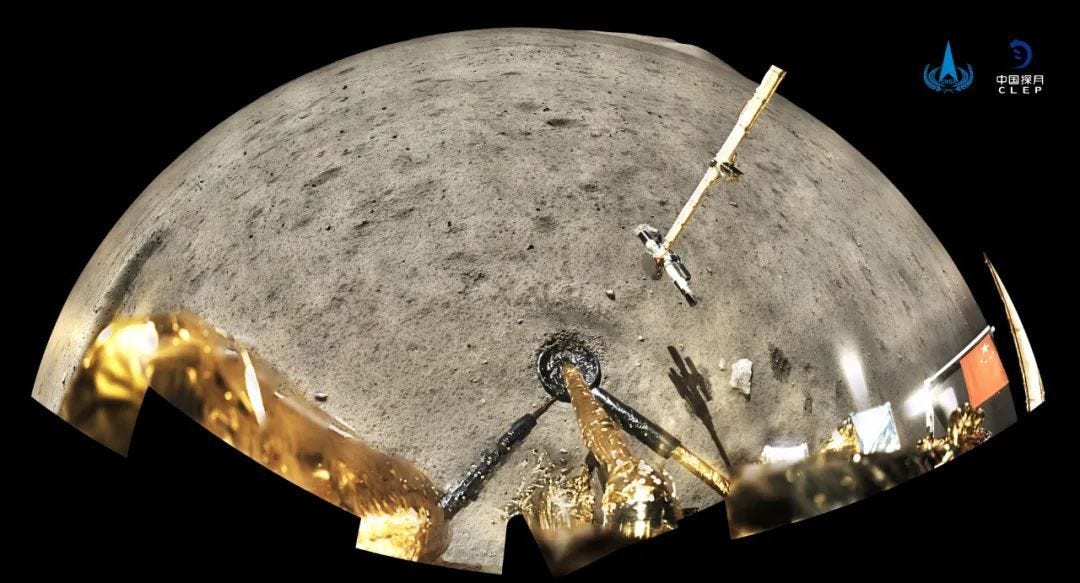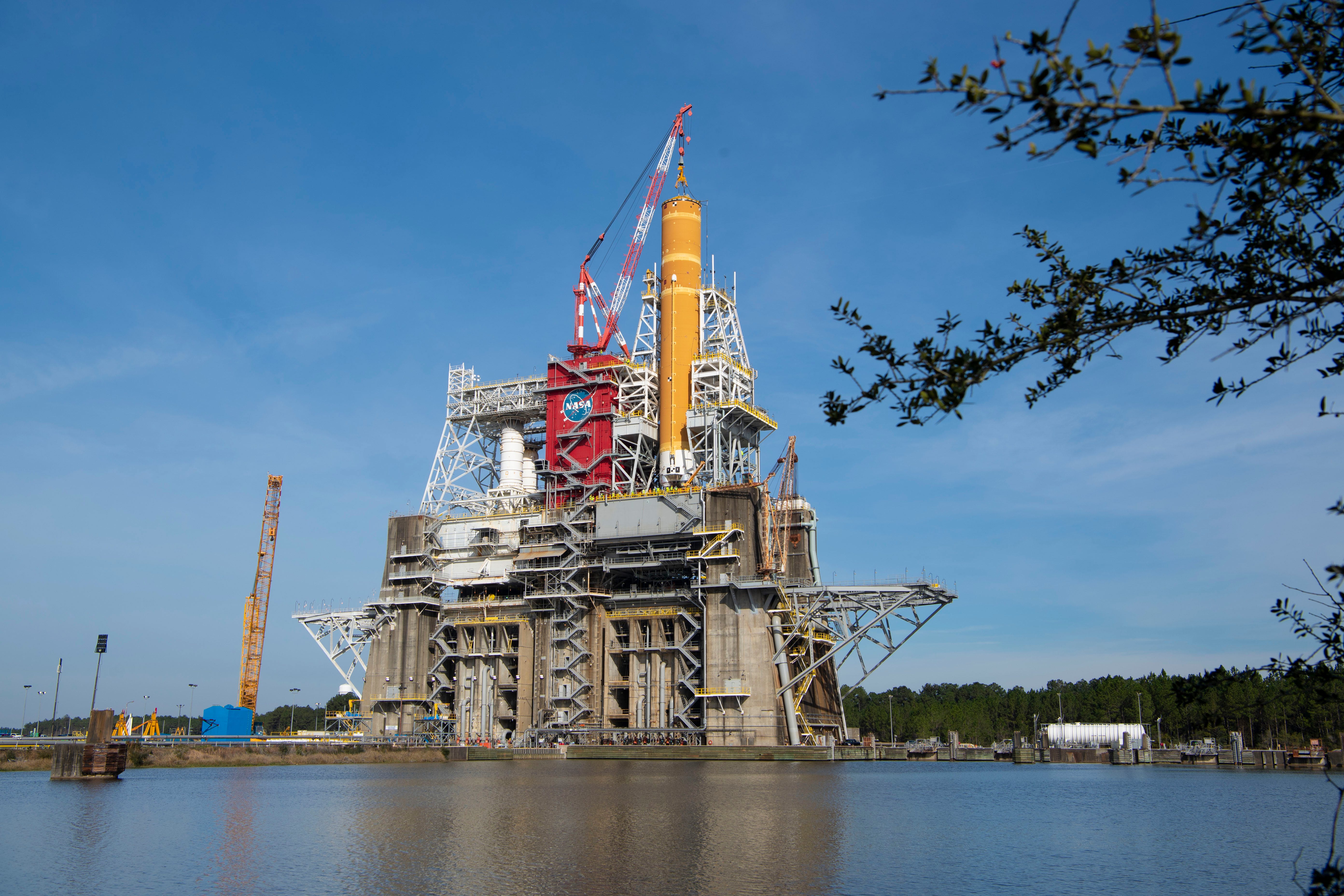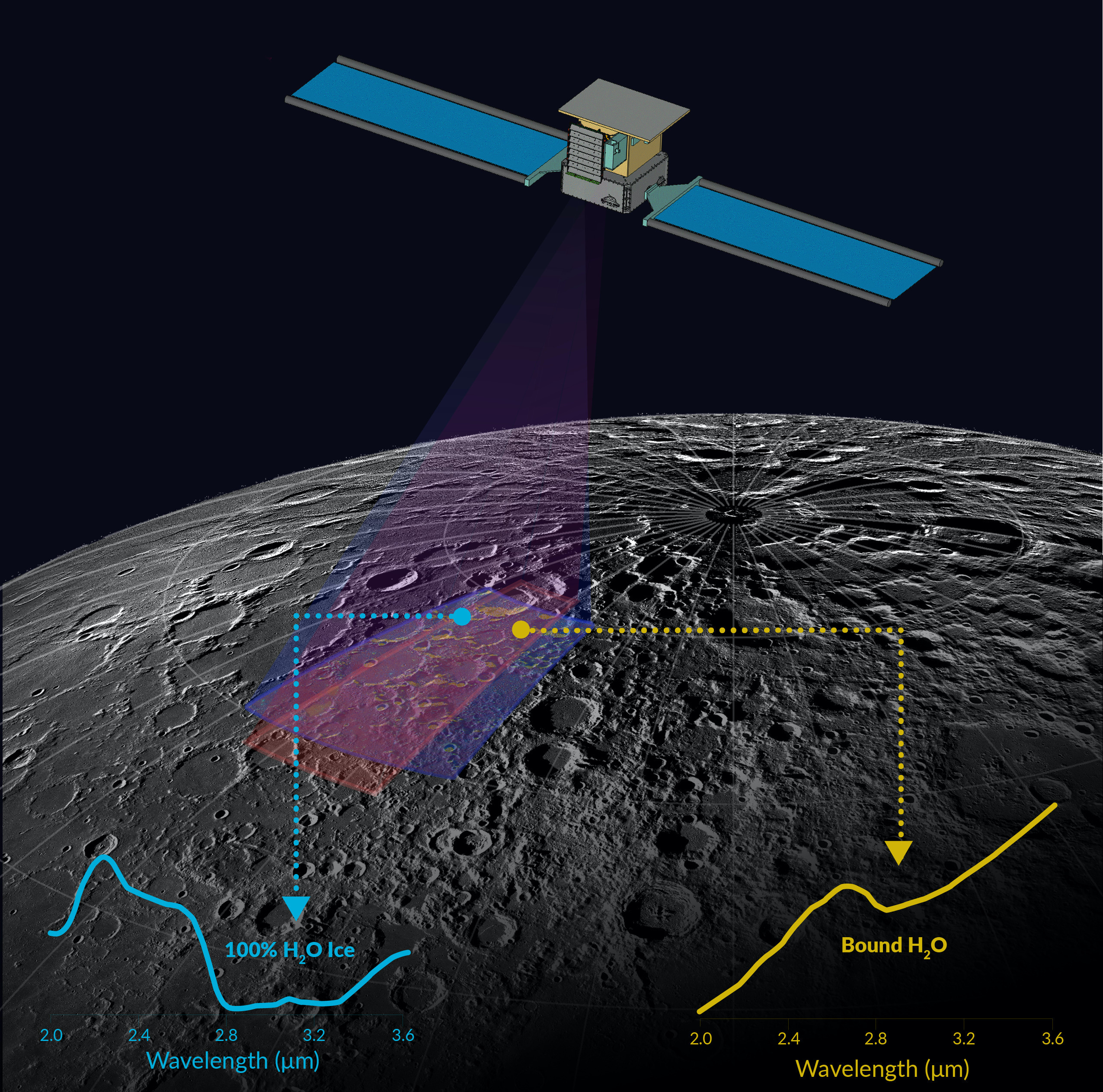Moon Monday Issue #4
Chang’e 5 collects Moon samples, testing of SLS’ rocket engines, a new NASA mission to map lunar water, and more developments in the lunar space.
Highlight

China’s Chang’e 5 lander successfully descended on the Moon on December 1, 15:11 UTC at the estimated coordinates 43.0576° N, 308.0839°E. NASA’s LRO spacecraft captured an image of the lander from lunar orbit. LRO has also been regularly imaging the Yutu-2 rover’s movements on the Moon’s farside from the Chang’e 4 mission.
Soon after landing, Chang’e 5 began drilling, scooping and sampling the lunar soil in its container from the geologically young and unique Rümker region and completed the operation within 19 hours.
The samples were transferred to the ascent stage of the lander which took off from the Moon on December 3 and entered orbit. It then automatically docked with the orbiter module of Chang’e 5 two days later, the first ever such feat in lunar orbit. The sample container was then transferred to the orbiter module, after which point the ascent vehicle separated. The sample container will be dropped on Earth on December 17, which happens to be my birthday. :)
Exploration
Targeting the launch of Artemis I mission to the Moon by November 2021, NASA is set to perform the remaining two of the Green Run Checklist tests on its SLS rocket engines. The first is a wet dress rehearsal today, December 7, in which the engineers will load about 2.6 million liters of cryogenic propellant in its core stage. If the wet dress rehearsal is successful, the last checklist item is hot firing all four engines of SLS’ core stage, planned for the week of December 21.
Meanwhile, NASA is simultaneously manufacturing SLS’ core stages for the Artemis II and Artemis III lunar missions, assembling the crewed Orion spacecraft for Artemis I, and ensuring that the 7-kilometer-path from the Vehicle Assembly Building to Launch Complex 39B can support the weight of the behemoth Crawler Transporter-2, as well as the massive SLS rocket, Orion, and the mobile launcher.

Momentus announced that its next-generation reusable Ardoride satellite vehicle will deliver a 50 kilograms spacecraft from Canadensys to Low Lunar Orbit between 2023 to 2024. At its maximum capacity, Arodirde can put up to 800 kilograms in Low Lunar Orbit.
NASA’s VIPER mission launching in 2023 to explore permanently shadowed regions on the Moon will effectively do its thinking from both its on-board flight software as well as from ground software run via mission control on Earth. To not lose Earth communications, VIPER will likely explore shallower permanently shadowed regions. Once the mission is over, the team intends to open source the rover’s software so that it can benefit future planetary rovers.
As part of a Tipping Point contract, NASA awarded a $2.4 million contract to Sierra Nevada Corporation to further develop its carbothermal reduction process to extract oxygen from minerals on the lunar surface.
As part of NASA’s BIG Ideas Challenge, students from Colorado School of Mines’ Space Resources Program are developing a system to wirelessly beam power from a lander on the Moon’s surface to rovers exploring permanently shadowed regions where power is one of the biggest constraints.
Science
As its next step in incentivizing the industry to build sample return technologies and help scientists get samples from multiple places on the Moon, NASA has selected four companies to collect lunar material (note: collect, not return to Earth) and transfer its ownership to the agency for company-proposed prices:
- $1 for Lunar Outpost for a 2023 landing on the Moon’s south pole
- $5,000 for ispace Japan for a 2022 landing at Lacus Somniorum on the Moon’s nearside
- $5,000 for ispace Europe for a 2023 landing on the Moon’s south pole
- $15,000 for Masten Space Systems for a 2023 landing on the Moon’s south pole
With growing interest from space nations around the world to acquire lunar resources, and increasingly varied interpretations of what is and isn’t allowed by the 1967 Outer Space Treaty, the Open Lunar Foundation announced a lunar resources trust to provide a framework for frictionless management of lunar resources between different stakeholders.
Under its SIMPLEx program, NASA has given the green light to build Lunar Trailblazer, a small orbiter that will confirm whether water on the Moon is loose and mobile, or tightly bound in crystalline rocks as recently suggested by NASA’s SOFIA observations, and how water moves across the Moon.

By studying isotopic composition of lunar samples, scientists have found the first tangible evidence that the Moon had a thin atmosphere, which existed during volcanic eruption events spanning at least from 3.8 to 3 billion years ago.
As per new simulations, researchers find that the if the Moon indeed formed due to a Mars-sized object hitting Earth, then the spin of the object has an important role to play in the process. Depending on the spin rate, the possible impact outcomes can be a merger of the two objects, a grazing hit and run or a Moon-sized body in Earth orbit.
More Moon
Learn the correct pronunciation of Chang’e while you appreciate the mission and talk about it with your friends and family.
The Moon Village Association is looking for a Project Manager to lead their first lunar payload, a camera, to be sent to the Moon within the next two years on an as-yet unidentified lander.
Permanently shadowed regions and water on the Moon are central to exploration plans of NASA, China, ESA, India, Japan, Russia and pretty much any other entity interested in this space (pun intended). Seeing that lunar polar exploration is going to be increasingly talked about over the next ten years, I’ve written the following two primer articles to get people on the jargon bandwagon.
Like my work? Support me.
